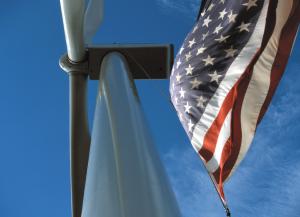Windpower is caught in a vicious cycle of Washington politics. Escaping the cycle will require visionary leadership in Congress and the utility industry.
Windpower has come a long way in the past decade. Ten years ago, utility planners were hesitant about adding windpower to their systems. They weren't convinced wind machines were ready for prime-time utility applications, given their high cost, low efficiency, and poor reliability.

Today, utility perspectives on windpower have changed dramatically. "People used to say, 'The machines don't work.' They don't say that anymore," says Robert Kahn, a wind energy consultant based in Mercer Island, Wash. "Now they say, 'The power is intermittent.' And that's a stage-two question."
Technology development has made wind turbines more efficient and durable, and large-scale manufacturing has driven costs down. Consequently, in the right conditions a kilowatt-hour of windpower can compete favorably against a kilowatt-hour of fossil generation. Moreover, turbine performance is supported by such blue-chip manufacturers as General Electric, Mitsubishi, and Siemens-which is especially helpful for utility executives facing skeptical directors and commissioners.
Given these advances, policymakers today view windpower more favorably than they have in the past. More than 20 states have adopted renewable portfolio standards (RPS) that set targets for wind and other renewable resources, and the Federal Energy Regulatory Commission (FERC) recently proposed new transmission rules to help wind farms access transmission resources cost-effectively.

